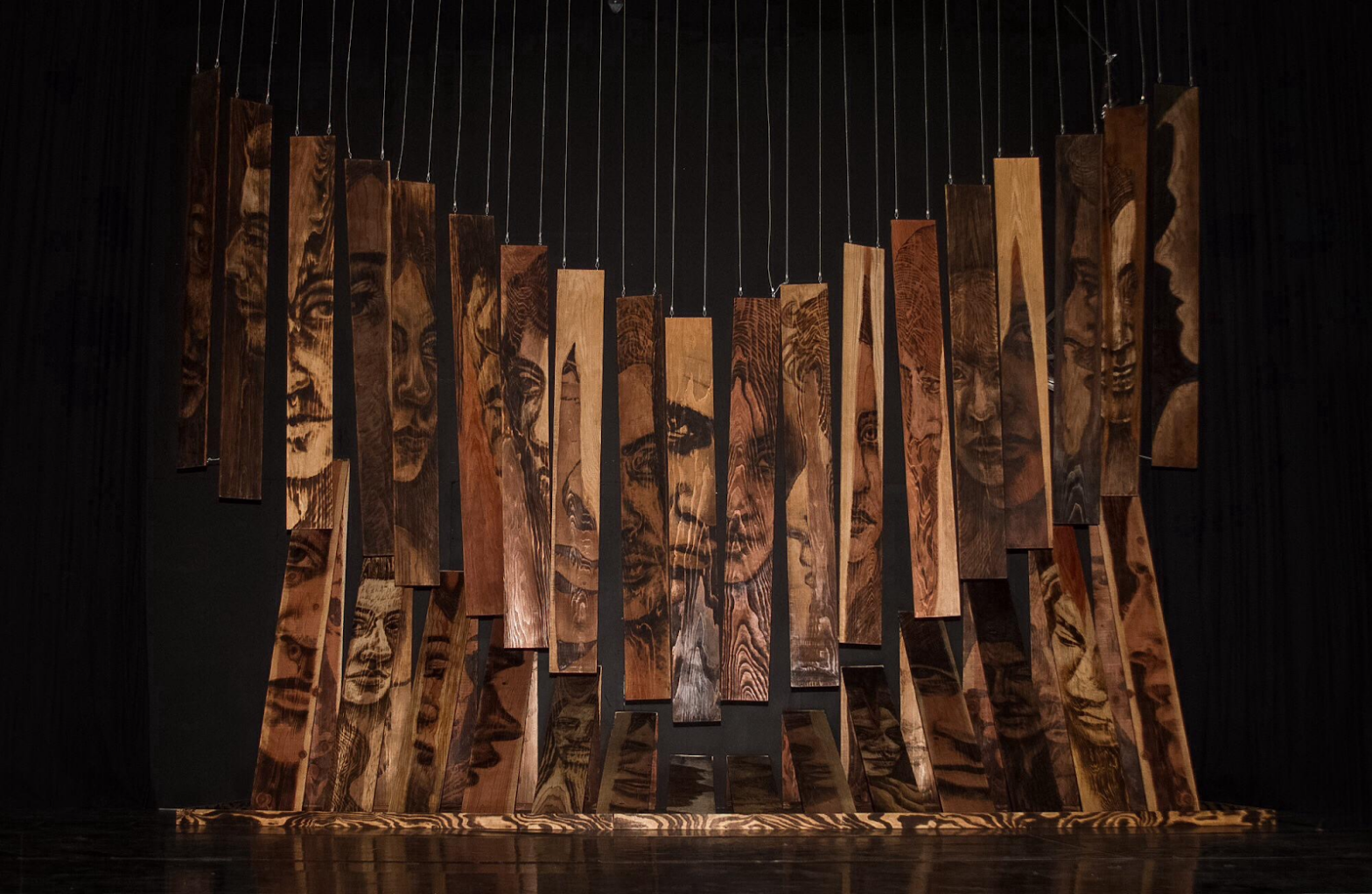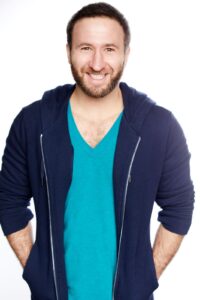Creating something new seems hard to do, especially for an artist. There are, after all, only so many mediums out there. The artists who surprise and captivate are those who are able to take their art in unexpected directions, and this is where Zachary Aronson enters the world stage. As the pioneer of using flamethrowers and blow torches to paint portraits of amazing complexity on hardwoods, Zach is showing the world that there is indeed still more for the artistic world to discover and develop.
I learn more about Zach and his work by taking a tour of his series, displayed in his LA studio. With over 100 portraits to look at, I am in for a morning of reflection, study, and peacefulness. First, toss aside the idea of paint on the floor and canvases stacked in corners. Zach’s studio is nearly spotless, and he has arranged his portraits so that the walls of the building are blocked from view. You get the sense that the studio is actually constructed from portraits.
“It’s like a gallery,” I say, walking slowly from panel to panel. “All these people’s faces are amazing. How on earth do you get so much detail using just fire?”
“It’s taken some practice, obviously,” Zach answers, following next to me. “Over time, I’ve learned how to slowly take away layers of the wood and to be strategic about how I do it. There’s a process that every portrait undergoes, and the result is what you see here.”
Most pieces, I learn, are between 5-8 feet tall. Zach has done some that are smaller and can work with bigger panels, but he generally sticks to this range. “It just seems to be the perfect size for capturing the range of emotions each model brings to our session,” he explains.
As we continue, I ask Zach if there is any story behind the portraits, especially since he began painting them last year. “I have been doing these since COVID began,” he replies. “Art has always been an outlet for me, so doing these portraits has helped me let out my own turmoil over the pandemic and recession. It goes deeper than that, though, as I decided to relate the story of the pandemic’s effect on all of us through these portraits. As you walk, you’ll see the expressions of my models change from despair to resilience.”
Zach leads me to a portrait of a middle-aged man and stoops down to show me how the wood was much blacker at the bottom.
“This is from a flame thrower,” he explains, running his fingers just over the area. “I didn’t start using it until COVID hit last year, when my pieces became much darker and moodier. They became less about the person and more about what they were feeling. With the flamethrower, part of the portraits became just black, burned, and ash, like this part here. It represents destruction, and you don’t see the wood as much.”
Zach leads me to another portrait. “Contrast that last one with this. This is a newer portrait from COVID, from when the pandemic began to lift. You can tell because this one is a little more hopeful. It is more triumphant and reflects that humanity can come out of dark times. I see my series as a form of perseverance or perhaps defiance in the face of everything we have collectively gone through.”
It takes a light touch to create art so detailed using fire, and I ask Zach where he got his training. “CalArts grad school,” he replies. “That’s where much of my skill comes from, though I have spent the time since then learning about this medium and becoming one with it.”
I ask Zach why he was so attracted to doing portraits vs. some other subject, like landscapes. “It sounds a bit simplistic, but I really like people,” he replies thoughtfully. “Each person is so different and brings to the session their own personality, worries, and dreams. It’s always an intriguing challenge as an artist to capture all of that and to do it in a way that honors the person. Often, though, the portrait is not necessarily a direct representation of the person. Sometimes it’s more obscure or anonymous. The portrait will tell a story, but it reflects the person’s essence, not necessarily their exact likeness.”
While Zach paints portraits for individuals on a commercial basis, he usually hires models to come sit for him and to be part of his greater vision. “They are crucial to my work and to my goal of showing all of these pieces in a gallery. I’ve already shown in eight galleries and done numerous shows. This is unique, and as word gets out about the medium I am pioneering, I’m finding a big audience for it.”
I tell Zach that I respect what he has done with fire. “Thank you, but the potential for fire to be creative was always there,” he says. “Too many artists, myself included, assumed that fire was only destructive. Then I discovered that, in fact, it had the potential to create beautiful art, and that changed the direction of my life. Now I am dedicated to understanding it better and working with it to capture the essence of the human spirit. I want the world to see all of this and enjoy it as I do.”
For more information on Zachary Aronson and his ability to paint portraits using only fire, please see:
Website: www.zaronson.comInstagram: www.instagram.com/zacharyaronson



